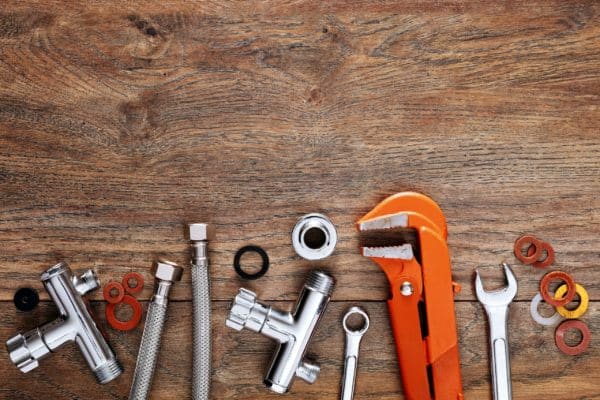
Sump pumps are a huge help in rainy climates or anywhere that is prone to flooding. They work by pumping water out of the basement or crawl space in a building to reduce the risk of flooding. When choosing a sump pump, it is essential that the unit is the right size. If the pump is too small, it may not have sufficient power to pump water out quickly enough to prevent flooding. If the pump is oversized, it will end up turning on and off much more frequently, and the motor is likely to burn out much sooner. Here is everything you need to know to determine what size and type of sump pump you need.
Important Factors When Choosing a Sump Pump
There are three main factors you’ll need to consider when choosing a sump pump: the type of pump, how many gallons it can pump per hour, and how much horsepower the motor has. If you are looking to replace your old sump pump, we highly recommend that you choose a new unit with the same horsepower and pumping capacity as your old unit. The only exceptions are if your current unit has issues being able to pump out enough water at a time or ends up running almost constantly whenever it rains.
Sump pumps are either submersible or pedestal units, and it is important to choose the right one for your needs. The most common type is a submersible sump pump, and these tend to be more powerful and have a longer lifespan. These units sit down inside the sump basin and are always covered with water. This is why they last longer; the water helps to cool the motor down when the pump runs. The fact that the motor is always underneath the water also means that submersible units are much quieter.
Pedestal units are mostly only used in areas that rarely experience heavier rains and where you don’t need as much pumping capacity. These units have smaller horsepower powers, which sit outside the basin near the edge. The float and discharge pipe extend from the base of the unit and extend down into the basin.
Pumping capacity refers to how many gallons of water the unit can pump per hour. This is obviously important since it will determine whether the pump can keep up with the rising water during heavy rains.
Horsepower is also important in terms of how well the unit works. Specifically, the horsepower of the motor will determine how high and how far the unit can pump the water. If the horsepower isn’t sufficient, the unit won’t have enough power to properly pump water up from the basin and out of the house.
Measuring Water Flow Rate and Necessary Capacity
Determining how many gallons per minute the pump needs involves some fairly basic calculations and is something that can really only be done during a rainstorm when your existing pump is running. To calculate how many gallons per minute you need, you should first run your pump until it fully drains the basin and the unit then shuts off. After it shuts off, unplug the pump so that it can’t run any longer.
Once the pump shuts off, measure the depth of the standing water inside the basin. Next, wait for exactly one minute and then measure how the depth of the water again. You will then need to subtract the first measurement from the new depth to calculate how much water accumulated in the basin in that time.
You will also need to measure the diameter of the sump basin. Most basins are either 18 or 24 inches wide, and you can use this measurement to help calculate how many gallons of water would collect in the basin in an hour. For an 18-inch basin, every inch of water equals approximately one gallon. If you have a 24-inch basin, then every inch of water is equal to approximately two gallons.
Once you know how many gallons flowed in the basin in a minute, multiply by 60 to determine how many gallons would collect in the basin in an hour. Finally, you should multiply the gallons per hour by 1.5. This last step is done as a safety factor to ensure that the pump will still have sufficient power during an extremely heavy rainstorm.
Most 18-inch sump basins will fill up at a rate of around 20 inches per minute or around 20 gallons a minute. Let’s say that this is the case, which means your sump basin would collect approximately 1,200 gallons of water an hour. Using the above calculation, this means that you would need a unit capable of pumping 1,800 gallons per hour.
Vertical Lift and Horizontal Distance
The next thing you will need to do is measure the height and distance of the discharge pipe to determine how much horsepower you need. The vertical lift is calculated by using a tape measure to determine the distance from the bottom of the sump basin to where the discharge pipe exits your house. You will then need to measure the distance from where the discharge pipe exits the building to wherever it ends.
This is important as the total distance also determines how many gallons per hour the unit can pump. As the distance increases, the gallons per hour decreases. When looking at sump pumps, each one will have a performance curve that shows exactly how many gallons it can pump at different distances.
A 1/3-horsepower sump pump is usually capable of handling a maximum vertical lift of around 10 feet and a horizontal distance of up to 25 feet. This size of the pump is usually sufficient for an average-sized home and moderate rainfall.
For areas that are more prone to flooding, an average-sized home is better off with a 1/2-horsepower pump. These can usually handle a maximum vertical lift of up to 15 feet and a horizontal distance of up to 150 feet.
For larger homes, areas with a high water table, or areas especially susceptible to flooding, you will want to go with a 3/4- or 1-horsepower pump. These units can typically handle a maximum vertical lift of up to 30 feet and a horizontal distance of up to 250 feet. Compared to a 1/5-horsepower pump, these more powerful units will pump approximately 25% more water per minute and about twice as much water as a 1.4-horsepower unit.
When looking at the size of the motor, it is also important to consider the diameter of the discharge pipe. For more powerful pumps, you will need a larger discharge pipe than you would for a smaller unit. If the pipe is too small, it will limit the effectiveness of the pump, and the water will rise faster than the pump can handle.
Contact the Pros
If you’re not sure what size or type of sump pump you need, the expert team at Apex Plumbing, Heating, and Air Pros can help you choose the best unit for your home. We install, repair, and maintain all types of sump pumps, and we also offer a full range of other plumbing services for residential and commercial customers in Columbus and the surrounding areas. This includes drain cleaning, plumbing repairs, water heater services, leak detection and repair, sewer services, and excavation. Give the team at Apex Plumbing, Heating, and Air Pros a call today for more information on sump pumps or any of our services.





